



Broiler Economics: 2022 - a year of inflation and volatile markets
Dr. Paul Aho highlights the the economic drivers in 2022At the beginning of 2022, the world economy was growing rapidly, interest rates were extremely low, supply chain problems were at their maximum and a war broke out in a grain basket. The resulting supply shortage compared to demand resulted in rapid inflation in the price of most goods and services.
In the second half of the year, the supply chain problems began to improve; central banks started raising rates, the world economy cooled and the pace of inflation slowed down. Oil, for example, started the year at $75 per barrel, rose to $130 and then fell back to $75. In a similar fashion, many commodity prices that were high are beginning to return to normal. Corn rose from $6 per bushel at the beginning of the year to $8 per bushel and is now $6.50. Boneless breast prices in the US started the year at $2.30 per pound rose to $3.50 in late May and then fell to just $1.00 in December. Soybean meal, an exception to the pattern, started the year $100 per ton less than current prices.
The US Federal Reserve, after waiting perhaps too long to increase interest rates, has been increasing them at an unprecedented rate. The outcome of this credit tightening is likely to be slower growth accompanied by a reduction in inflation.
Whether it be crude or corn, bull markets do not last forever because high prices stimulate additional production and discourage use. That potent combination eventually brings a bull market to its knees. Barring a drought, grain markets are likely to experience a bear market in 2023 due to falling demand and adequate supply. The world economy is slowing down. In 2021 world growth was a robust 5.7%. Growth could slow to 2% or less in 2023.

Corn
World corn production rose substantially last crop year but is expected to fall somewhat this crop year (crop years run from September to August) This crop year is expected to show a decrease in the US, Ukraine and Europe in general. Overall world production will be lower. Nevertheless, projections of ending world and US corn inventory numbers for next year are down only slightly.

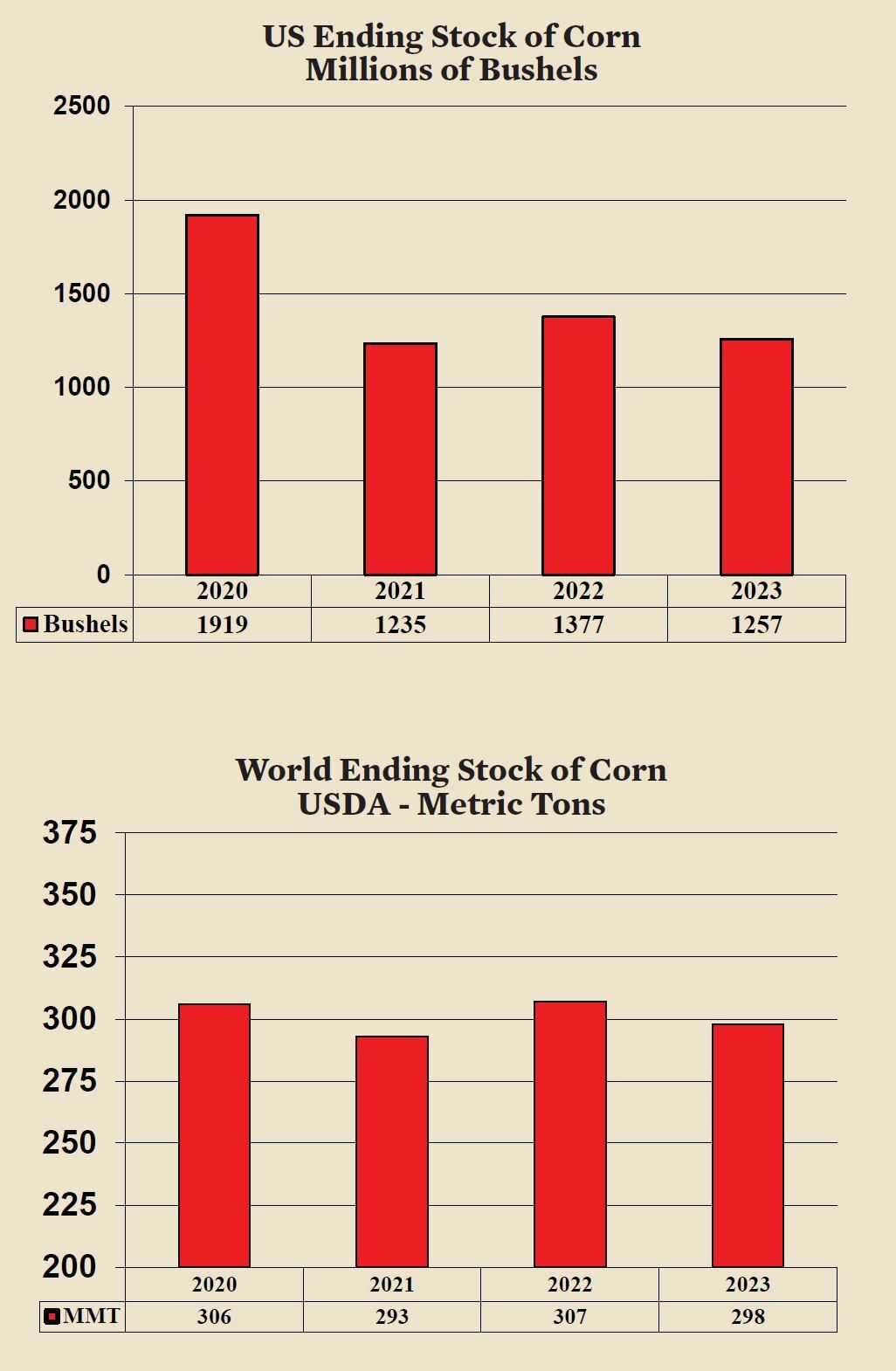

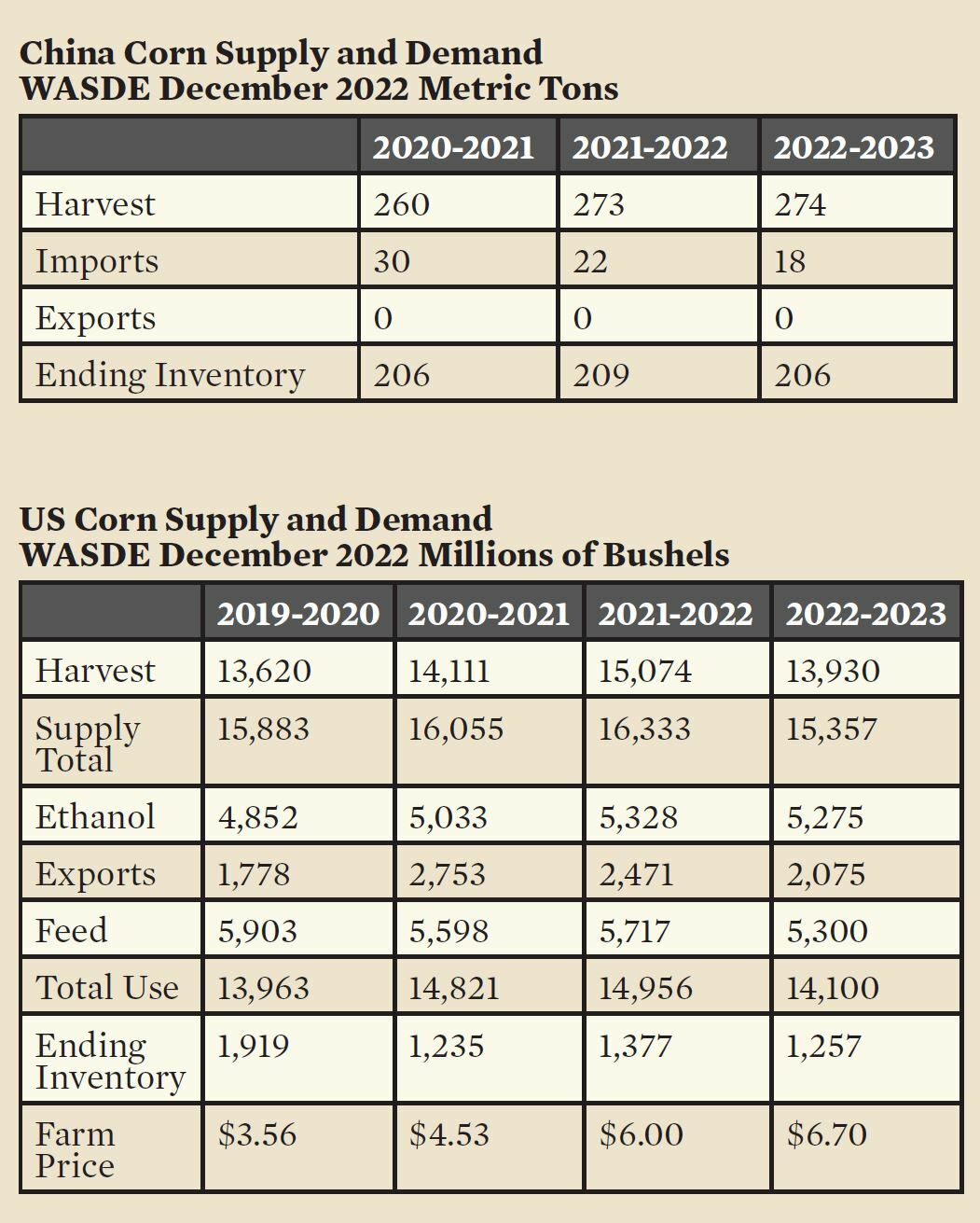
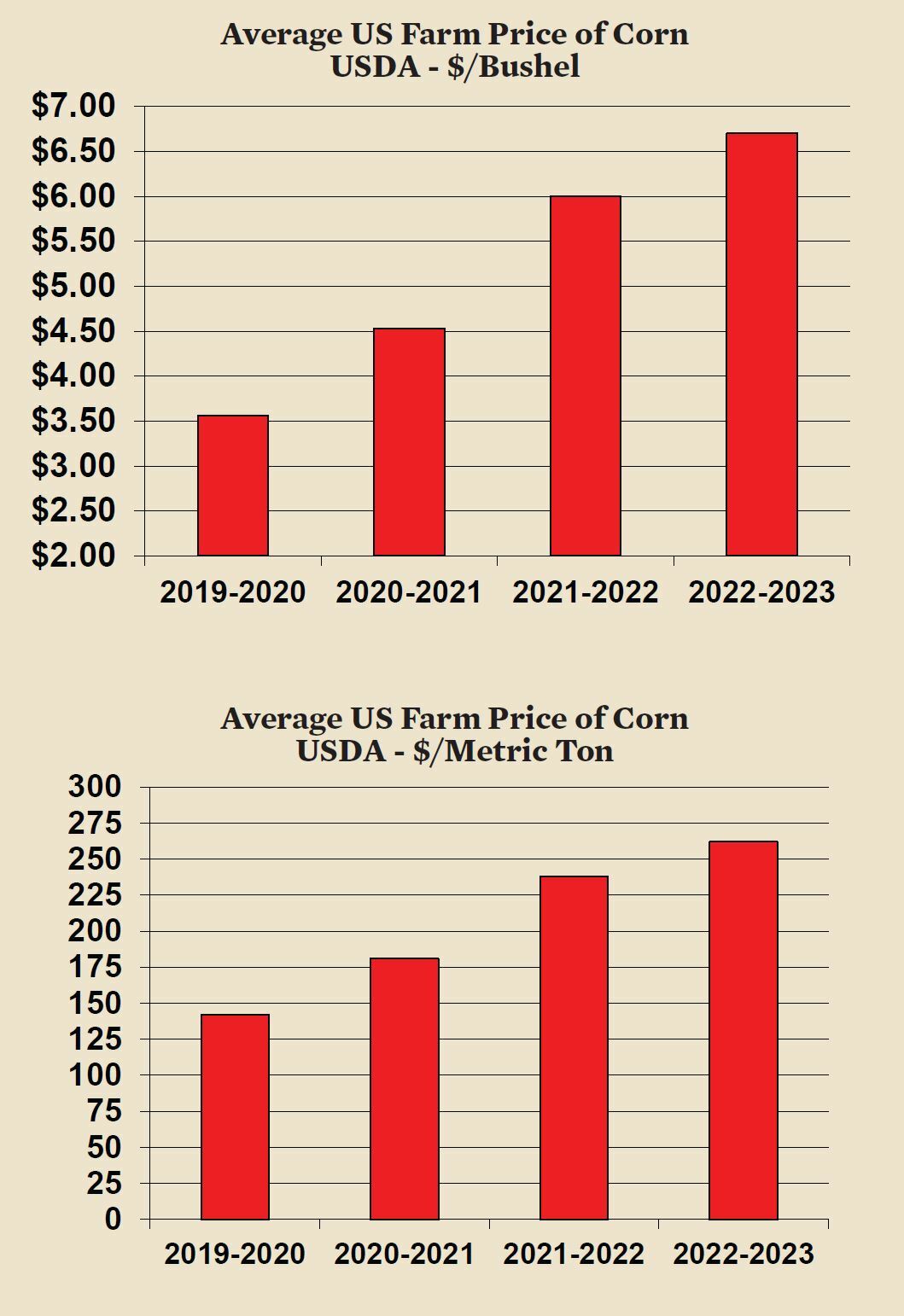
Although the average price this crop year in the US is projected to be higher than last crop year, it is likely that the bull market in corn is over unless there is a serious drought in South America. Prices are likely to start the crop year higher and end lower. The stage will be set for a bear market and lower average prices in 2023-2024 and beyond.
Soybeans
Soybean prices were less affected by the war and more affected by drought and floods in Argentina and Brazil. For last crop year, South America was once expected to produce 206 MMT. However, drought in some areas and floods in other areas reduced that number by 30 MMT. This crop year, production is expected to bounce back to over 200 MMT although production in Argentina is threatened by drought. The enormous capacity for Brazil to increase soybean production puts a cap on prices in the future.

US ending stock is expected to fall this crop year, however, world ending stocks will be rising. It is important to note that what happens to the crop in Brazil and Argentina is now far more important than what happens to the crop in the US. A developing drought in Argentina pushed up prices by $40 per ton recently. If that drought is serious, soybean meal prices in this crop year will be higher than last crop year contrary to what the USDA is currently projecting.
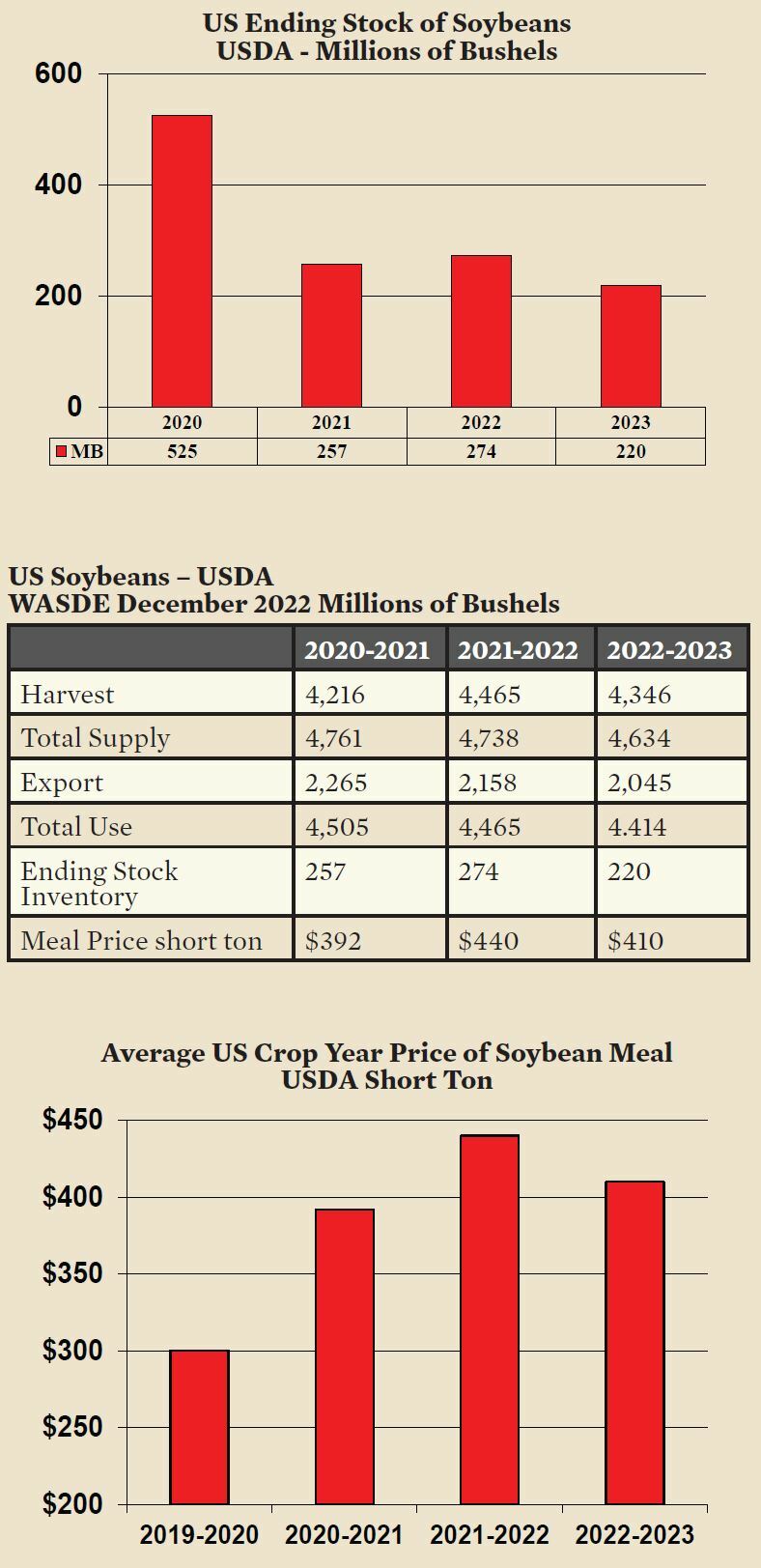

Chicken Industry
The world chicken industry expanded just 0.5% this year but is expected to accelerate to 1.8% in 2023. Production is likely to accelerate despite high energy and grain prices. In the US, the acceleration is already evident; production is projected to rise 2.7% this year compared to just 0.5% last year. Most of that increase took place in the last half of the year. This recent increase in production is sending the industry deep into the red as high grain prices and lower chicken prices combine to create losses. Continued low prices would significantly reduce production growth next year.

Since 2019 poultry per capita consumption in the US increased while red meat per capita consumption stayed the same. This divergence is expected to accelerate next year with red meat per capita consumption expected to fall significantly while poultry consumption rises. The scarcity of red meat next year might help poultry prices recover from their current low levels.
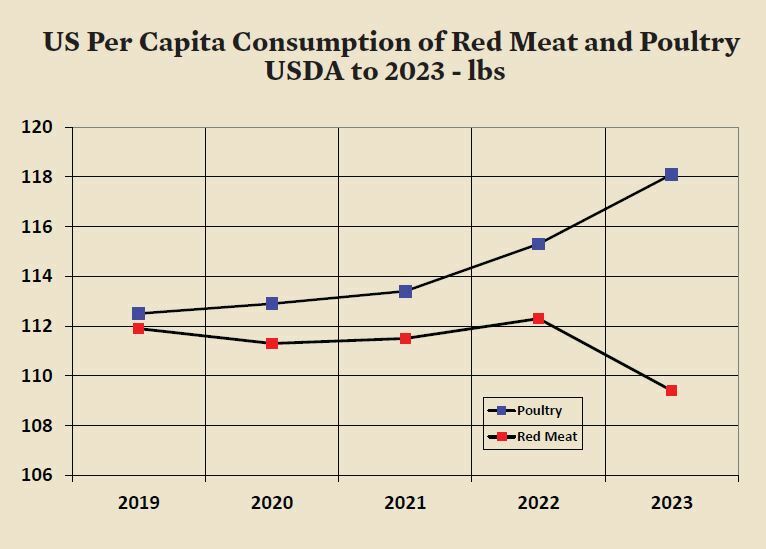
Deboned Breast
Deboned breast meat prices were much higher earlier this year but fell sharply in the last half of the year. Prices are now at $1.00 per pound ($2.20 per kilo) down from $3.50 per pound ($7.70 per kilo) just seven months ago. Prices dropped as more supply became available (in particular, more deboning). In 2023, prices can be expected to be below that of 2022.

Frozen Leg Quarters for Export
Leg quarter prices also increased substantially this year and then fell back to earth. From just 22 cents per pound in January (48 cents per kilo) for frozen exported leg quarters, the price rose to 40 cents in July ($0.88 per kilo) only to fall back to 23 cents recently (50 cents per kilo). The higher value of the dollar contributed to the erosion of the price recently. Also, the increased quantity of chickens deboned for breast meat results in an increased availability of large leg quarters for export.
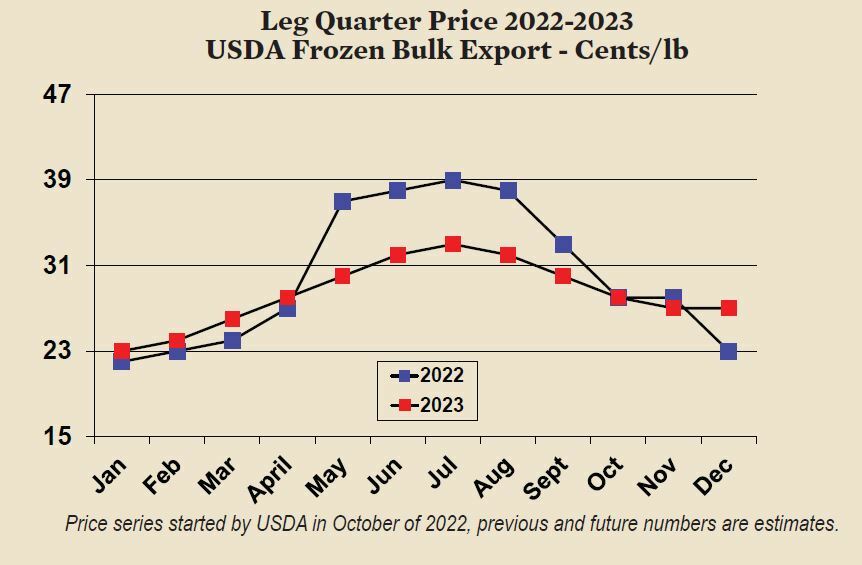
Wings
The falling price of wings earlier this year was a harbinger of declines in the other chicken parts that came later. The extremely high price of wings contributed to demand destruction this year. The wholesale price is now less than 40% of what it was earlier this year. At this point, the price of wings is likely to stabilize and perhaps even increase during the fall sports season. Next year, prices can be expected to rise somewhat from the extremely low current levels.
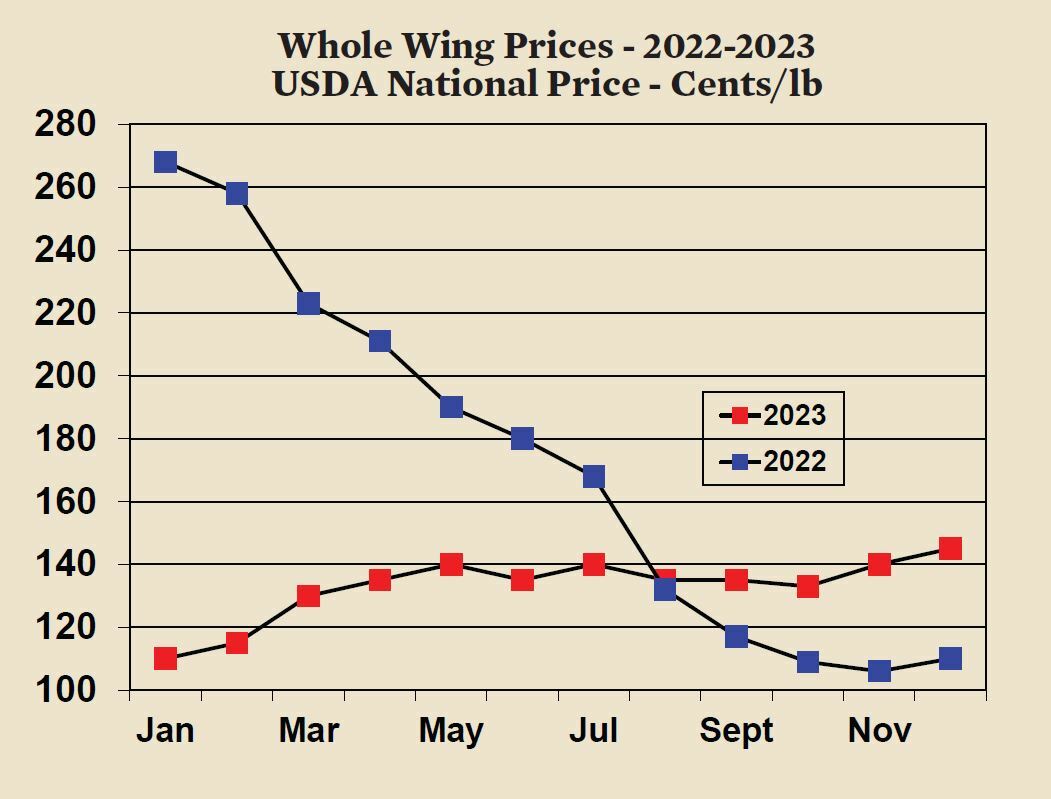
Chicken production in the US is now unprofitable thanks to continued high feed cost and low product prices. The industry may return to profitability next spring if grain prices fall as expected and chicken prices rise.
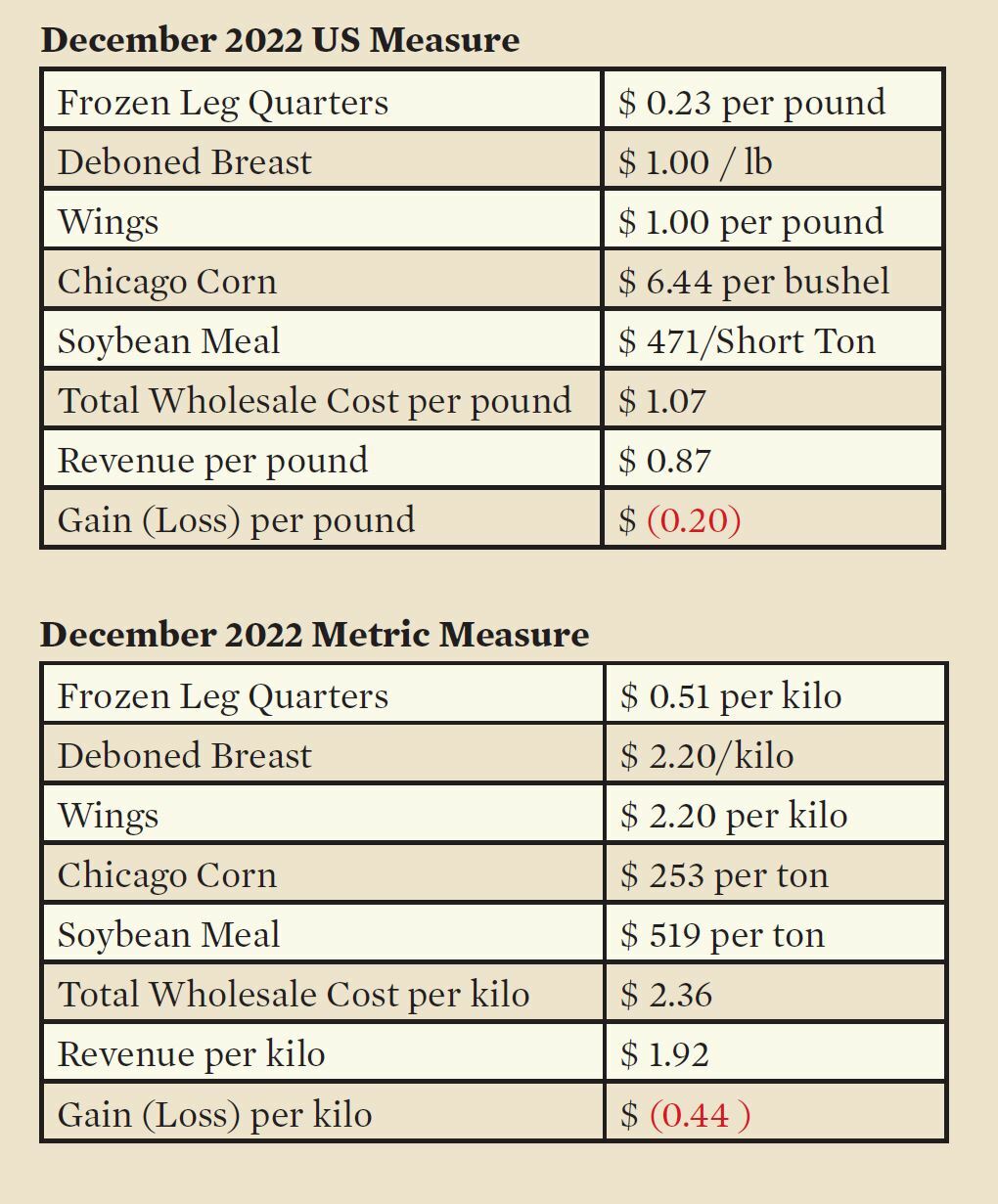
About the Author - Paul W. Aho, Ph.D. email: [email protected]
Dr. Paul Aho is an international agribusiness economist specializing in projects related to the poultry industry and has been a prolific writer in trade journals in both the United States and in Latin America. Dr. Aho now operates his own consulting company called “Poultry Perspective”. In this role, he works around the world with poultry managers and government policy makers.









